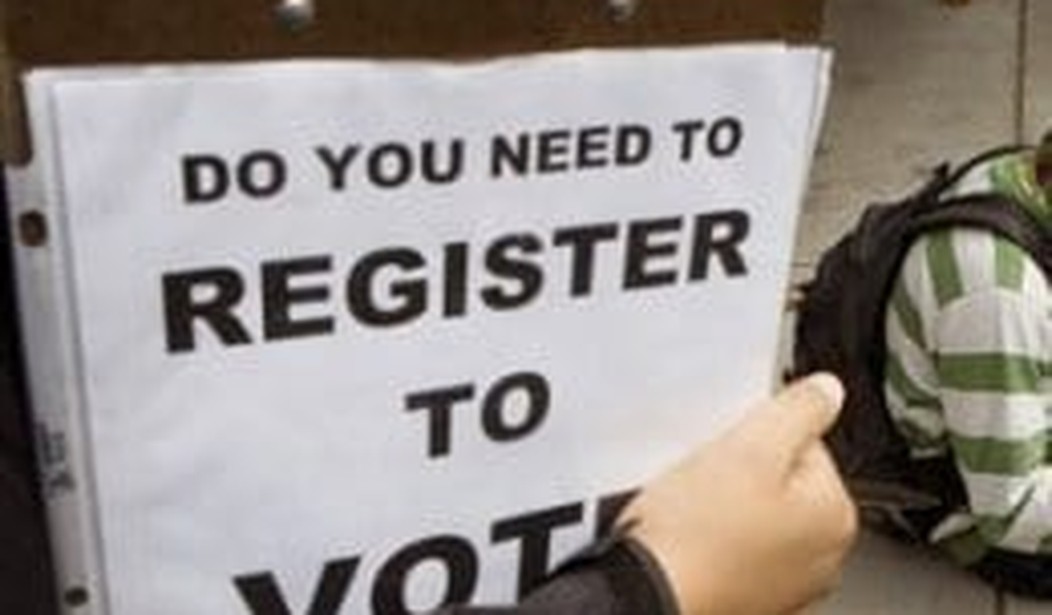WASHINGTON – It has been more than a year since the Supreme Court invalidated a key section of the 1975 Voting Rights Act, which civil liberties groups argue has left them with fewer tools to fight voting discrimination.
The court’s decision in Shelby v. Holder invalidated the coverage formula of Section 4, which determined the jurisdictions that had to submit any election law changes to the federal government for approval before they went into effect.
Section 5 mandates that covered jurisdictions meet a so-called preclearance requirement. The court, however, left in place the preclearance mechanism itself, leaving Congress to design a new coverage formula in order to restore the protections under Section 5.
Chief Justice John Roberts provided two guideposts for Congress: The legislation would have to respect the equal sovereignty of the state and it would have to capture recent instances of voter discrimination.
“What we’re left with is not adequate to protect voting rights,” Deborah Vagins, senior legislative counsel at the American Civil Liberties Union, said at a recent briefing in the U.S. Capitol. “Section 5 had some incredibly useful tools that we don’t have anymore.”
Vagins said Section 5 provides several valuable elements to combat discrimination in voting.
First, Section 5 requires jurisdictions included in the coverage formula to submit all proposed election procedural changes to the federal government before implementation.
“What Section 5 really stopped was thousands of last-minute changes, polling place changes, precinct changes at the local level,” Vagins said. “We have now lost the ability to get notice about those and the onus is now on…constituents to find out about these changes.”
Second, Section 5’s preclearance mechanism “freezes” voting changes before enactment.
Vagins said no other part of the Voting Rights Act can “stop discrimination before it occurs.”
Third, Section 5 places the burden of proof on the jurisdiction requesting the election change to show that the change does not have a negative impact on minority voters. Now, the burden of proof is on the voter, she said. Fourth, Section 5 targets ongoing discrimination in a relatively low-cost administrative process that avoids long case-by-case legal battles associated with Section 2.
Congress introduced bicameral legislation in January to update and modernize the Voting Rights Act.
The Voting Rights Amendment Act of 2014 would mandate federal preclearance for states with documented voting rights violations in the previous 15 years. If passed, four states would fall under federal oversight for their voting laws: Georgia, Texas, Mississippi, and Louisiana.
The legislation includes a “rolling” preclearance mechanism that keeps the coverage designations continuously updated through an annual re-evaluation.
The bill would require public notice of any voting changes that differ from those that were in effect 180 days before an election.
The legislation would make it easier to seek a preliminary injunction against a potentially discriminatory voting law. Plaintiffs would only have to show that the hardship to them outweighs the hardship to the state if a law is blocked in court pending a full trial.
Finally, the bill would allow the Department of Justice to send observers into jurisdictions where there is evidence of voting discrimination.
Republicans have criticized the legislation because it places undue burden on certain states. They also argue that other sections of the Voting Rights Act provide adequate protection against electoral discrimination.
Vagins said the Supreme Court ruling effectively left Section 2 as the only tool to prevent the implementation of discriminatory voting changes. Compared to Section 5 preclearance, preliminary injunctions under Section 2 is a more burdensome and uncertain process, she noted.
The Department of Justice filed a lawsuit against Charleston County, S.C., in 2001, claiming that the at-large election of its county council violated Section 2 because it diluted minority-voting strength. More than two years later, after the case was filed, the federal district court ruled in favor of the United States.
“It took two election cycles for that to occur and people were disenfranchised during that time. Ultimately there was a victory. However, you cannot say that’s an equitable remedy to Section 5,” said Tanya Clay House, public policy director of the Lawyers’ Committee for Civil Rights Under Law. “The manpower and cost of that litigation was enormous. And that was the Justice Department, not some of us who might try to litigate some of these cases. We have limited funding and there’s only certain things we can do.”
Clay House said her organization has conducted about 25 hearings across the country to collect testimony on the current landscape of voting and elections in the U.S. The group will release a report on their findings next month.
Polling places moved without notice, district maps that dilute the minority vote, and strict voter ID laws are all examples of tools to prevent minorities from voting, she said.
“You may not see some of the blatant discriminatory tactics that were taking place when the Voting Rights Act was originally passed, but they still have the same effect,” Clay House said.
In an effort to counter the Supreme Court ruling, the Obama administration has challenged several voting laws it finds discriminatory.
U.S. Attorney General Eric Holder said the Justice Department will intervene in court challenges to laws that restrict voting in Wisconsin and Ohio. The Wisconsin law requires voters to have identification to cast a ballot. The law in Ohio eliminated the early voting period and ended same-day registration, among other restrictions. Both states were not required to pre-clear their voting law changes.
The Department of Justice has intervened in similar cases challenging the voting law in North Carolina and Texas.
“I will use every power that I have, every ability that I have as Attorney General to defend that right to vote,” Holder told ABC News.









Join the conversation as a VIP Member